|
|

|
Porsche, and the Porsche crest are registered trademarks of Dr. Ing. h.c. F. Porsche AG.
This site is not affiliated with Porsche in any way. Its only purpose is to provide an online forum for car enthusiasts. All other trademarks are property of their respective owners. |
|
|
| Dr Evil |
 Jun 5 2008, 03:47 PM Jun 5 2008, 03:47 PM
Post
#1
|
|
Send me your transmission!                Group: Members Posts: 23,041 Joined: 21-November 03 From: Loveland, OH 45140 Member No.: 1,372 Region Association: MidAtlantic Region 
|
I am looking at my options on machining my corvair/VW power plant for the bus. I have come up with a few questions and realize that I have largely been going at this alone and could use input from those who know more than me.
1) I am considering taking the money I would spend to have the p/c machined and buying a mini mill so I can do it myself. Is this foolish? Is it possible? To see what I am going to need to do, look below. Trim the type 1 cylinder skirt, and drill new holes in the fins for the corvair head stud pattern: 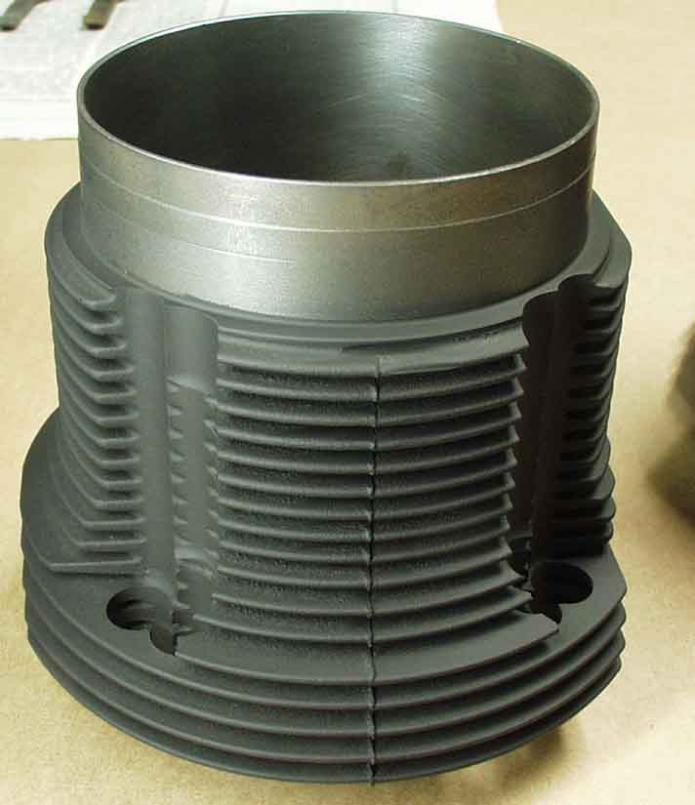 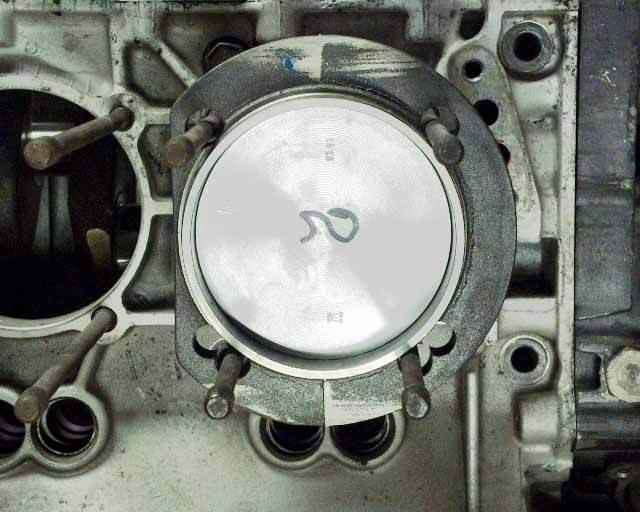 Trim piston skirts to make room for opposing rod end and bolt: 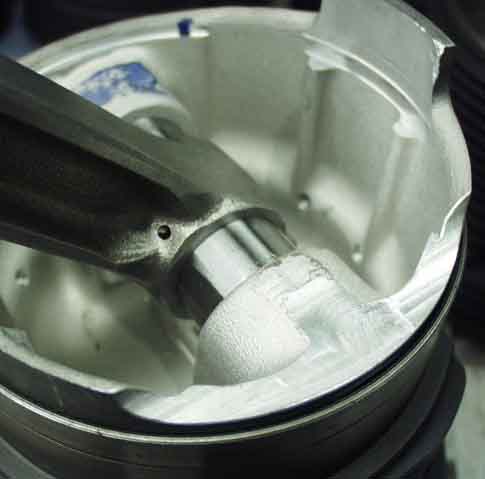 Trim center cylinder side fins down: 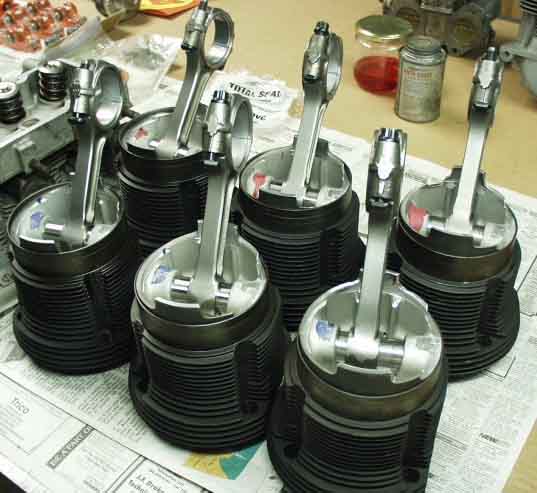 2) I will also need to get the block and heads bored out, the valve guides replaced and reamed to the right size, and the rods punched out and oil holes added. If anyone here is up to doing that stuff, let me know as I am looking for a less expensive alternative. But, for the cylinders and pistons, I am considering trying it myself. 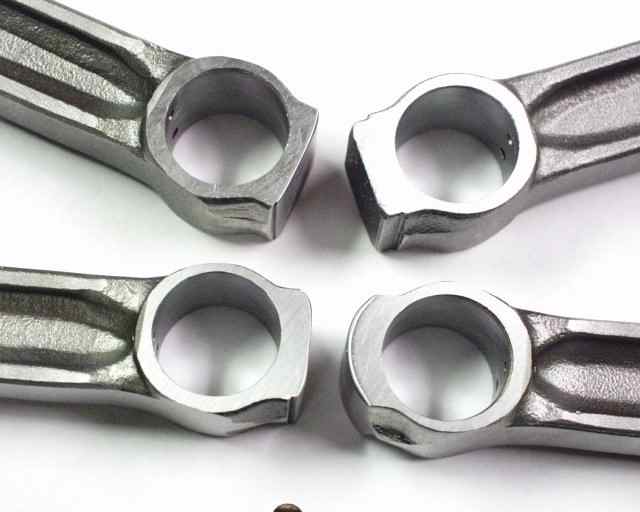 |
  |
Replies
| BMXerror |
 Jun 5 2008, 09:37 PM Jun 5 2008, 09:37 PM
Post
#2
|
|
Senior Member    Group: Members Posts: 1,705 Joined: 8-April 06 From: Hesperia Ca Member No.: 5,842 |
I agree with whoever said this first (too lazy to look who it was). Getting a rigid tool setup is key. The biggest limitation of a small machine is not always travel and almost never horsepower. It's usually being sturdy enough to handle a job. If your setup is flexing all over the place, you won't get any precision and you'll drive yourself nuts! Also, given that you're willing to do this now, I would think that you'll want to machine stuff in the future. That being said I'd look at larger, used machines and get the job done that way. I think the one that smdubovsky posted would be sufficient, but barely. Try to go as big as you can afford.
As far as cost goes, it never ends with the machine. You need cutters, holders, indicators, inspection equipment, and a way to hold your work down(i.e., a vise and/or a set of clamps). It'll help if you have someone local that you can borrow some of these things from. Now if that didn't scare you off, let's get down to business. Given that the cylinders don't locate off of the studs, drilling the holes in the fins will be no problem. I'd say drill through the top portion that are complete holes, flip the cylinders, and mill out the partial holes on the bottom. Sorry smdubovsky, but I wouldn't use a ball nosed endmill for that job. I think that would deflect more. I'd recommend using a flat nosed, two flute endmill and just plunge it slowly. Cutting the cylinders down on a mill would be a cake walk if you don't need high precision. Just clamp it down and hack it off. Trimming the side fins is similarly easy given the low precision necessary. I'd just side mill it, but it would need to be done in two passes; top and bottom. No cutter that I've used is long enough to do that in one shot. I'm not sure what you mean with the skirts, but it sounds like you just want to cut them down. If this is the case, it's similar to the two previous operations, but I'd try to do this to some level of precision to maintain a certain level of balance in the rotating assembly. +/- .001 ought to do. All of the afore mentioned jobs would be cake on a machine like the one that smdubovsky recommended. Boring the block and heads would be more difficult, but not impossible in my opinion. The key with that is taking a good long time setting it up and indicating it in, as high precision is necessary. I wouldn't do with less than a test indicator with .0005" resolution, but .0001" is preferred. If you do decide to tackle those jobs, you will absolutely have to invest in a set of parallel clamps. Something like that can't be held in a vise. I have ideas on how to set up those jobs if you get that far.... never done a block, but I just finished my T4 heads. The valve guides would be easy to indicate and ream, but I don't know how you'd press them in just because I've never done it. I don't quite understand what you need done with the rods, so I won't go there right now. PM me if you need any further advice. Sounds like you've got some good local talent to help you out there too. Make good use of it, but make sure they don't take over the job. Make sure you can do it yourself next time. Good luck. Mark D. |
Posts in this topic
 Dr Evil SOT: Need machinist input on project idea Jun 5 2008, 03:47 PM
Dr Evil SOT: Need machinist input on project idea Jun 5 2008, 03:47 PM
 smdubovsky Mike,
Im no machinist but I play one on tv:) I bo... Jun 5 2008, 04:39 PM
smdubovsky Mike,
Im no machinist but I play one on tv:) I bo... Jun 5 2008, 04:39 PM
 Vacca Rabite Have someone else do it. You are not just paying ... Jun 5 2008, 04:46 PM
Vacca Rabite Have someone else do it. You are not just paying ... Jun 5 2008, 04:46 PM
 Dr Evil I wouldnt attempt boring the block of heads on a m... Jun 5 2008, 05:25 PM
Dr Evil I wouldnt attempt boring the block of heads on a m... Jun 5 2008, 05:25 PM
 Dr Evil Oh ya, the cylinders are TI VW so are cast iron an... Jun 5 2008, 05:28 PM
Dr Evil Oh ya, the cylinders are TI VW so are cast iron an... Jun 5 2008, 05:28 PM
 sixnotfour John Barnes is an old friend of my dads who still ... Jun 5 2008, 05:37 PM
sixnotfour John Barnes is an old friend of my dads who still ... Jun 5 2008, 05:37 PM
 Dr Evil Found Johns contact and shot him an email. The goi... Jun 5 2008, 07:22 PM
Dr Evil Found Johns contact and shot him an email. The goi... Jun 5 2008, 07:22 PM
 smdubovsky Zach,
The fun is in doing it yourself. Because yo... Jun 5 2008, 08:14 PM
smdubovsky Zach,
The fun is in doing it yourself. Because yo... Jun 5 2008, 08:14 PM
 Dr Evil The holes in the fins are not needing to be precis... Jun 5 2008, 08:18 PM
Dr Evil The holes in the fins are not needing to be precis... Jun 5 2008, 08:18 PM
 smdubovsky Heres the minimum "really usefull" looki... Jun 5 2008, 08:48 PM
smdubovsky Heres the minimum "really usefull" looki... Jun 5 2008, 08:48 PM
 Dr Evil Yikes, ya big and far. If it were closer I may be ... Jun 5 2008, 08:54 PM
Dr Evil Yikes, ya big and far. If it were closer I may be ... Jun 5 2008, 08:54 PM
 Dr Evil My latest thoughts,
The holes in the cylinders ca... Jun 5 2008, 09:01 PM
Dr Evil My latest thoughts,
The holes in the cylinders ca... Jun 5 2008, 09:01 PM
 BMXerror Oi... New questions by the time I posted.. Haha. T... Jun 5 2008, 09:47 PM
BMXerror Oi... New questions by the time I posted.. Haha. T... Jun 5 2008, 09:47 PM
 smdubovsky It'd be hard as hell to drill holes w/ a press... Jun 5 2008, 09:50 PM
smdubovsky It'd be hard as hell to drill holes w/ a press... Jun 5 2008, 09:50 PM

 BMXerror
If you get creative anythings possibile w/ few t... Jun 5 2008, 09:55 PM
BMXerror
If you get creative anythings possibile w/ few t... Jun 5 2008, 09:55 PM
 smdubovsky Mark D,
What I meant w/ the ball end was: plunge w... Jun 5 2008, 09:59 PM
smdubovsky Mark D,
What I meant w/ the ball end was: plunge w... Jun 5 2008, 09:59 PM
 BMXerror Ah... Sorry for the misunderstanding. That'd w... Jun 5 2008, 11:32 PM
BMXerror Ah... Sorry for the misunderstanding. That'd w... Jun 5 2008, 11:32 PM
 Smitty911 In a word, No, have someone else do it.
I have th... Jun 6 2008, 08:16 AM
Smitty911 In a word, No, have someone else do it.
I have th... Jun 6 2008, 08:16 AM
 Dr Evil You guys have what I am thinking about down, I thi... Jun 6 2008, 05:11 PM
Dr Evil You guys have what I am thinking about down, I thi... Jun 6 2008, 05:11 PM  |
1 User(s) are reading this topic (1 Guests and 0 Anonymous Users)
0 Members:

|
Lo-Fi Version | Time is now: 9th July 2025 - 03:30 PM |
Invision Power Board
v9.1.4 © 2025 IPS, Inc.







